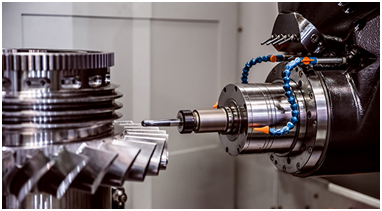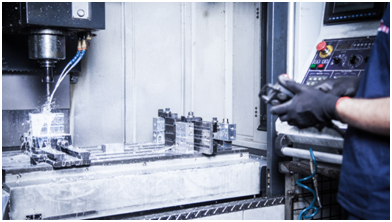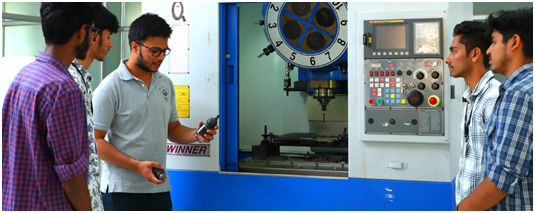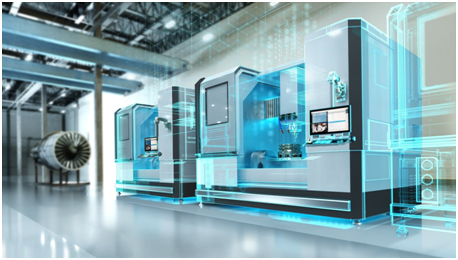
Introduction
In the realm of advanced manufacturing, Computer Numerical Control (CNC) machines are indispensable tools that blend speed, precision, and versatility. As industries evolve and client demands become more complex, optimizing CNC machines for enhanced speed and precision is not merely a value-add; it’s a necessity. This blog delves into the strategies and practices to optimize your CNC machine performance, ensuring they operate at their peak.
Understanding CNC Machine Capabilities
CNC machines are the backbone of modern manufacturing, offering unparalleled accuracy and repeatability in producing parts. They work by translating a digital design into physical parts using precise, controlled movements. The efficiency of these machines depends significantly on their components, such as spindles, cutters, and motors, which influence both speed and precision.
Basic Functioning
CNC machines operate by interpreting a set of numerical instructions provided by a computer program. These instructions dictate the movement of tools and machinery to shape, cut, drill, or mill materials like metal, plastic, wood, and composites. The primary advantage of CNC machining is its ability to produce precise and complex parts with minimal human intervention.
Key Components
Controller: The brain of a CNC machine, it interprets the computer-aided design (CAD) and computer-aided manufacturing (CAM) data, converting them into electrical signals that control the machine’s movements.
Drive/Motors: These components move the cutter or workpiece to the precise locations as dictated by the program. Stepper and servo motors are commonly used.
Spindle: This part holds and spins the cutting tools. Its speed and power are crucial for the effectiveness of the cutting process.
Bed: The bed is the frame that supports the machine and workpiece. Its stability is key to precision.
Tool Changer: In advanced CNC machines, an automatic tool changer allows the machine to use different tools without manual intervention, enhancing efficiency.
Coolant System: This system helps in managing heat and removing chips from the cutting area, crucial for maintaining tool life and part quality.
Capabilities and Limitations
Precision and Repeatability: CNC machines are known for their high precision and repeatability, essential in industries like aerospace, automotive, and medical devices.
Complex Geometries: They can produce complex parts that would be difficult or impossible to make with manual machining.
Speed and Efficiency: CNC machines can operate continuously without fatigue, significantly increasing productivity.
Material Versatility: They can work with a wide range of materials, from soft plastics to hard metals.
Customization and Flexibility: CNC machines are highly adaptable, making them ideal for custom or small-batch production.
Limitations: The size of the part is limited by the size of the machine. Also, the initial setup and programming can be time-consuming and require skilled personnel.
Applications
CNC machines are used in various applications, including but not limited to:
Prototyping and Production: From single prototypes to high-volume production runs.
Complex Components: In sectors like aerospace, automotive, and medical, where complex shapes and high precision are required.
Customization: In custom manufacturing, where unique designs are produced.
Enhancing Speed
 Speed in CNC machining is a critical factor that influences productivity. Increasing speed, however, shouldn’t compromise the quality of the output. Several strategies can help enhance speed effectively:
Speed in CNC machining is a critical factor that influences productivity. Increasing speed, however, shouldn’t compromise the quality of the output. Several strategies can help enhance speed effectively:
Advanced Software Solutions: Modern CNC machines are compatible with sophisticated software that optimizes cutting paths. This software minimizes idle time and maximizes active cutting, thereby reducing overall production time.
Upgraded Machine Components: Investing in high-speed spindles and quality cutters can significantly impact the machine’s cutting speed. These components ensure faster operations without degrading the quality of the final product.
Efficient Workflow: Streamlining the workflow, including setup and tool change times, can considerably reduce non-cutting time. Simple adjustments in the workflow can lead to substantial time savings.
Improving Precision
 Precision is paramount in CNC machining. A high precision level ensures that the produced parts meet stringent specifications and quality standards. To enhance precision:
Precision is paramount in CNC machining. A high precision level ensures that the produced parts meet stringent specifications and quality standards. To enhance precision:
Calibration and Alignment: Regular calibration and alignment of CNC machines ensure that they operate with maximum accuracy. This practice helps in maintaining the consistency of output.
High-Quality Tooling: Using premium quality cutting tools and holders provides greater stability and accuracy in machining processes. The right tools minimize vibrations and deviations, leading to more precise cuts.
Temperature Control: Since temperature variations can affect material properties and machine components, maintaining a controlled environment can help in achieving higher precision.
Balancing Speed and Precision

The real challenge in CNC machining lies in balancing speed and precision. Optimizing one without affecting the other requires a deep understanding of the machine capabilities and the nature of the workpiece. Customizing machine settings based on material properties and desired outcomes is a step towards achieving this balance. Additionally, using adaptive control systems can dynamically adjust operating conditions to maintain optimal performance.
- Understanding Material and Tooling
Material Properties: Different materials respond differently under machining. Understanding the material properties helps in setting the right speed and feed rates to optimize cutting without losing precision.
Tool Selection: Choosing the right tool for the job is vital. High-quality tools can handle faster speeds without losing accuracy.
- Optimizing Cutting Parameters
Speed and Feed Rates: Adjust the speed (RPM) and feed rate (the speed at which the tool moves through the material) to find the optimal balance. Too fast may lead to inaccuracies, while too slow can be inefficient.
Depth of Cut: Adjusting the depth of each cut can affect both speed and precision. Shallower cuts may be more precise but slower.
- Advanced CNC Software
CAM Software Optimization: Use advanced CAM (Computer-Aided Manufacturing) software that can optimize the cutting paths and reduce idle time, thereby improving speed without sacrificing precision.
Simulation and Testing: Before actual machining, use software to simulate the tool paths. This helps in identifying any potential issues that might affect speed or precision.
- Machine Calibration and Maintenance
Regular Calibration: Ensure that the CNC machine is regularly calibrated. Accurate calibration is essential for precision.
Preventive Maintenance: Routine maintenance keeps the machine in optimal condition, reducing the chances of inaccuracies due to wear and tear.
- Adaptive Control Technology
Feedback Systems: Implementing adaptive control systems that provide real-time feedback and adjustments can help in maintaining a balance between speed and precision.
Sensors and Monitoring: Use sensors to monitor cutting conditions and make automatic adjustments to the operation parameters.
- Employee Training and Experience
Skilled Operators: Well-trained operators are better at setting up machines efficiently and making necessary adjustments to balance speed and precision.
Continuous Learning: Encourage operators to stay updated with the latest machining techniques and technologies.
- Balancing Workload and Machine Capabilities
Understanding Machine Limits: Know the capabilities and limits of your CNC machine. Overloading the machine can affect precision, while underutilizing it can lead to inefficiencies.
Job Planning: Plan jobs and schedules to maximize machine utilization without compromising on quality.
- Temperature Control and Environmental Factors
Stable Environment: Fluctuations in temperature and humidity can affect both the material and the machine, impacting precision. Maintaining a stable environment is key.
- Innovative Techniques and Experimentation
Exploring New Techniques: Stay open to new machining techniques and strategies that might offer better speed-precision balances.
Experimentation: Sometimes, trial and error with different settings and approaches can lead to finding the perfect balance for a particular job.
Maintenance and Upkeep
 Regular maintenance is crucial for the optimal performance of CNC machines. Proper maintenance not only ensures consistent quality but also extends the life of the machine. Key maintenance practices include:
Regular maintenance is crucial for the optimal performance of CNC machines. Proper maintenance not only ensures consistent quality but also extends the life of the machine. Key maintenance practices include:
Routine Inspections: Regular checks for wear and tear, especially on cutting tools and moving parts, can prevent unexpected downtimes.
Lubrication: Adequate lubrication of all moving parts reduces friction and wear, which in turn maintains both speed and precision.
Software Updates: Keeping the CNC software updated ensures that the machine operates with the latest improvements and efficiency enhancements.
Future Trends in CNC Machining
 The future of CNC machining is geared towards even higher speeds and more refined precision. Emerging technologies like AI and machine learning are set to revolutionize CNC operations by enabling smarter, more autonomous machines. Innovations in tooling materials and design are also anticipated, further pushing the boundaries of what’s possible in CNC machining.
The future of CNC machining is geared towards even higher speeds and more refined precision. Emerging technologies like AI and machine learning are set to revolutionize CNC operations by enabling smarter, more autonomous machines. Innovations in tooling materials and design are also anticipated, further pushing the boundaries of what’s possible in CNC machining.
Integration of AI and Machine Learning: The blog suggests that artificial intelligence (AI) and machine learning will significantly impact CNC machining. These technologies could enable smarter, more autonomous CNC machines that can optimize their operations in real-time, learn from past tasks, and even predict maintenance needs. This advancement would lead to increased efficiency, reduced waste, and potentially new capabilities in machining.
Emerging Technologies: It’s hinted that there will be continual development in the technologies associated with CNC machines. This could include advancements in software algorithms, improved user interfaces, and more integrated systems that streamline the entire manufacturing process from design to production.
Innovations in Tooling Materials and Design: The future of CNC machining is also expected to see innovations in the materials and designs of the tools used. These innovations could lead to tools that last longer, perform better, and possibly provide new ways to machine materials that are currently difficult to work with.
Enhanced Precision and Speed: Future trends are likely to focus on pushing the boundaries of what’s currently possible in terms of precision and speed. This could mean machines capable of producing extremely fine details at faster rates, which is crucial for industries requiring high precision like aerospace, medical devices, and automotive.
Smart Factories and IoT Integration: The integration of CNC machines with the broader concept of smart factories and the Internet of Things (IoT) is also anticipated. This means CNC machines could become more interconnected, sharing data with other machines and systems, leading to more efficient, responsive, and adaptive manufacturing environments.
Conclusion
Optimizing CNC machine performance for speed and precision is a multifaceted endeavor. It requires a blend of technological upgrades, efficient workflows, regular maintenance, and a keen understanding of the machine’s capabilities. By focusing on these aspects, manufacturers can ensure their CNC machines are not just meeting the current demands but are also ready for future challenges in the manufacturing landscape.
